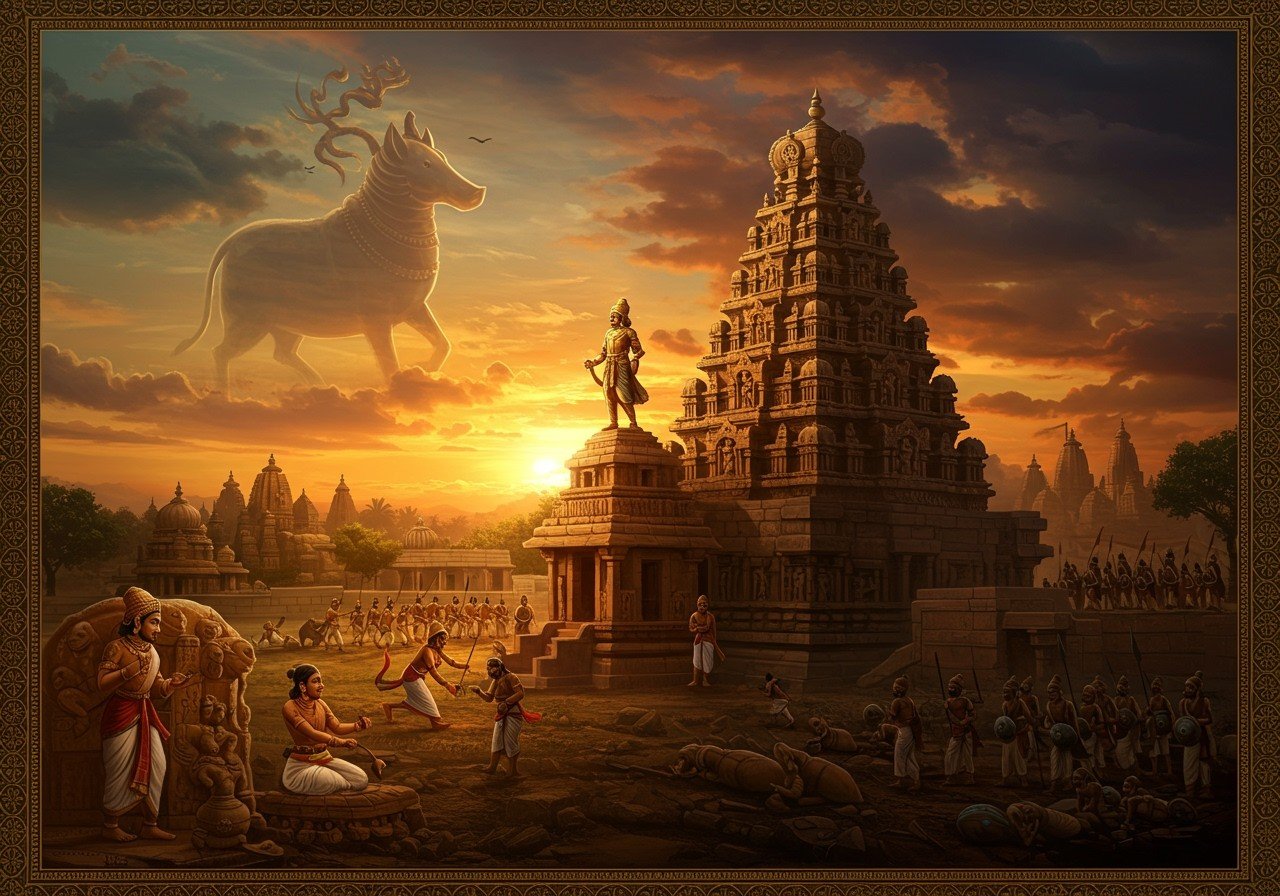
The Chalukya Dynasty remains one of the most important periods in Southern India’s history. From the 6th to the 12th centuries CE, the Chalukya rulers forged a powerful empire that significantly influenced the region’s political landscape, cultural advancements, and architectural style. This blog post delves into the rise and fall of the Chalukya Dynasty, exploring its origins, significant milestones, and eventual decline.
Origins and Rise of the Chalukya Dynasty
The Chalukya Dynasty’s story begins with Pulakeshin I in the early 6th century CE. Establishing his capital at Vatapi (present-day Badami), he started consolidating power within the Deccan region. The dynasty branched into three distinct but related lines: the Badami Chalukyas (6th-8th centuries), the Western Chalukyas (10th-12th centuries), and the Eastern Chalukyas (7th-11th centuries). Renowned for their administrative acumen and military strength, the Chalukyas expanded their territories and influence significantly. Pulakeshin II, grandson of Pulakeshin I, emerged as a prominent ruler, defeating the Pallavas and extending the empire to its greatest extent.
The Golden Age under Pulakeshin II
The reign of Pulakeshin II marked the Chalukya Dynasty’s golden age. His successful military campaigns against neighboring kingdoms, including the Pallavas, Kadambas, and Gangas, solidified Chalukya dominance in Southern India. His victory over King Harsha of Kannauj further cemented his reputation as a formidable ruler. This era witnessed remarkable advancements in architecture, including the rock-cut temples at Badami and the intricately carved temples at Aihole and Pattadakal. The Chalukyas were patrons of the arts and literature, fostering the growth of Kannada and Sanskrit literature. The prevailing social and economic stability facilitated thriving trade and commerce, contributing to the empire’s overall prosperity.
Challenges and Decline of the Empire
Despite their initial successes, the Chalukyas faced numerous challenges that eventually led to their decline. Internal conflicts and succession disputes weakened the central authority, leaving the empire vulnerable to external threats. The rise of the Rashtrakutas, who captured Vatapi, marked the beginning of the dynasty’s downfall. The Eastern Chalukyas, while maintaining control in Vengi (present-day Andhra Pradesh), ultimately fell to the Chola Empire. The Western Chalukyas experienced a resurgence under Tailapa II in the late 10th century, but their revival was short-lived due to ongoing conflicts with the Cholas and Hoysalas. By the early 12th century, the Chalukya Dynasty had met its end.
Architectural and Cultural Legacy
The Chalukya Dynasty left an enduring legacy through its remarkable contributions to Indian art and architecture. The rock-cut cave temples at Badami, adorned with intricate carvings and sculptures, showcase the Chalukyas’ exceptional artistic skills. The temple complex at Aihole, often called the “cradle of Indian temple architecture,” exemplifies early Chalukyan architectural styles and experimentation. Pattadakal, a UNESCO World Heritage Site, exhibits a fusion of Dravidian and Nagara architectural styles, highlighting the dynasty’s influence on temple architecture throughout India. The Chalukyas also championed regional languages, leading to significant literary works in Kannada and Sanskrit.
FAQs about the Chalukya Dynasty
What led to the decline of the Chalukya Dynasty? Internal strife and external pressures from rising kingdoms like the Rashtrakutas and Hoysalas contributed to their decline.
What are the most significant architectural achievements of the Chalukyas? The rock-cut temples at Badami, the temple complex at Aihole, and the architectural fusion at Pattadakal are among their most celebrated achievements. You can find puja items related to Hindu rituals at Poojn.in.
What is the significance of the Chalukya Dynasty in Indian history? The Chalukyas played a vital role in shaping South Indian culture and architecture, influencing later dynasties and leaving behind a rich cultural heritage. Explore a wide variety of spiritual and ritualistic products available on Poojn.in.
Poojn.in: Your Source for Cultural and Ritual Items
Connect with India’s rich heritage through Poojn.in. We offer a wide selection of puja items, including Chamar Chanvars, Ashoka Chal Powder, and more, perfect for your personal rituals and celebrations. Discover the perfect items to enhance your spiritual practices and connect with the traditions of the Chalukya era.
Explore our collection today and bring a piece of history into your home. Visit Poojn.in.


